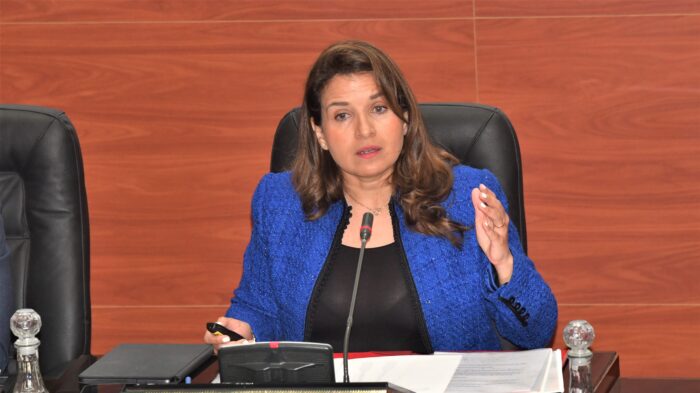On September 13th, the Council of Government adopted decree n°804.24.2, which regulates the use of smart bidirectional meters and specifies the features they must provide. According to the Ministry, these new meters will accelerate the implementation of smart electrical grids in the kingdom. They are also expected to enable better integration of renewable energies into the grid, particularly in the context of the law on self-generated electricity, which came into effect in March 2023. But what exactly is a smart bidirectional meter?

Unlike unidirectional meters, which are the most common in Morocco, a bidirectional meter is designed to measure energy flow in both directions: the electricity supplied by the grid and the electricity fed back into the grid by the consumer who produces its own power, through solar panels for example.
These meters are called « smart » because they enable real-time communication between the consumer and the energy provider. Thus offering remote access, via mobile applications, to detailed data on daily energy consumption. Which will allow users to better understand their consumption and production patterns and adjust their usage according to hourly rates.
One step forward, one step back
Although they are touted as revolutionary, these meters have limitations that make them unsuitable for local needs, points out energy management consultant Saïd Guemra. They do not meet the requirements of the renewable energy self-production regulations, which, while allowing surplus energy to be fed back into the national grid, limit the feeding to 20% of the total annual production.
The problem lies in the fact that bidirectional meters simply measure incoming and outgoing energy flows without accurately measuring the energy produced by the user. Thus, if the energy produced in a home is used instantly, the meter does not register it, skewing the calculation and resulting in an underestimation of the amount of electricity eligible for compensation. This puts self-producers, whether individuals or businesses, at a disadvantage.
This view is shared by Amin Bennouna, an energy research professor, who laments that the regulatory framework still favors distributors—namely the National Office of Electricity and Drinking Water (ONEE), which handles electricity distribution across most of the country, along with the Autonomous Water and Electricity Distribution Authorities (RADEE) and a few private companies like Lydec, Amendis, and Redal.
The two specialists interviewed by TelQuel mention the existence of meters specifically designed to calculate the electricity produced. These meters, often directly connected to the source of production, whether solar or wind, would be better suited as they protect the interests of consumers.
“The bidirectional meter would have been appropriate if, like in Tunisia, there were no limits on feeding energy back into the grid. It would be enough to simply calculate the difference between incoming and outgoing energy flows and compensate the consumer or distributor based on that difference. It’s simple and effective,” emphasizes Saïd Guemra.
More than one obstacle
Beyond measuring actual production, the 20% limitation remains a major obstacle and discourages households and industries from investing in renewable energy. This measure goes against the government’s stated goal of accelerating the energy transition in the country.
With this limitation, if you install solar panels at home and your surplus production reaches 60% of your consumption, the distributor is only obligated to pay for 20%. The remaining 40% is essentially collected for free by the distributor. “The meter is just a technical detail; it won’t resolve the issues with this law (on self-production). The fate of the energy injected beyond the 20% limit remains unclear, and the 20% cap is discouraging when you need to inject more than 50% of what you produce. This is the case for households and many industries,” explains the consultant.
Furthermore, this limit doesn’t align with the solar energy production cycle, which doesn’t correspond at all to consumption cycle. “Electricity consumption in a home during the day is very low. However, this is when you produce the most electricity, as solar production peaks depending on sunlight. In the evening, you produce almost nothing and therefore have to rely on the grid,” explains Amin Bennouna.
Beyond the calculation method and the injection limit, the tariffs for surplus electricity fed back into the grid by medium- and low-voltage producers are still pending. In February, the National Electricity Regulation Authority (ANRE) set the price for accessing the electricity transmission network for very high and high voltage (VHT-HT) users, which only includes 150 major industrial operators.
As for medium voltage, the institution began the process of defining a pricing structure in June 2024, but no information has been released yet. “This law has faced significant delays, and major issues need to be resolved for it to be applicable. Without knowing the buyback price of injected kilowatt-hours, we can’t move forward. Current producers are feeding electricity into their distributor’s grid for free, which discourages others from investing,” laments Saïd Guemra.
Written in French by Safae Hadri, edited in English by Eric Nielson




